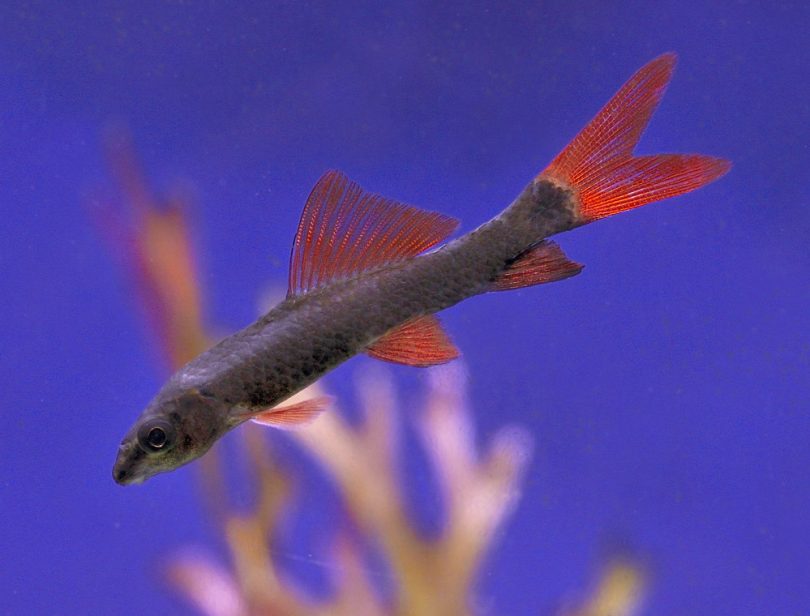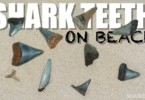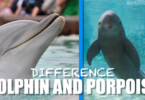Rainbow sharks – also known as Ruby sharks or Red finned sharks. Despite their name, the Rainbow sharks are not true sharks but are called so because they look like a shark. The Rainbow sharks are native to the warm waters of South- East Asia and prefer freshwater habitats over saltwater. They are highly migratory species and move to other localities during flooding or heavy rain.
Rainbow sharks are bottom dwellers species and prefer the sandy floors of the river because the food is available in abundant quantity. Do you want to learn about the feeding habitat of Rainbow Sharks? If yes then scroll down without wasting your time.
What Does Rainbow Shark Eat?
Rainbow sharks feed on a diversified food item either in their natural habitat or in an aquarium. Let’s take a look at their different feeding habitat one by one:
Natural Feeding Habitat
While enjoying life in their natural habitat, these bottom dwellers omnivorous species prefer to eat:
1: Crustaceans: Rainbow sharks feed on small crustaceans such as Mysis, krill, squids, crabs, and octopuses which are a good source of nutrition.
2: Aquatic Insects: The aquatic insects provide a good source of proteins to Rainbow sharks and are abundantly available to them in wild.
3: Insect Larvae: The larvae of insects provide the Rainbow sharks with nutrients as well as vitamins.
4: Brine Shrimp: The juvenile Rainbow sharks feed on brine shrimps as it is a good snack for them. The shrimps are highly nutritive and are easily digestible for Rainbow sharks.
5: Bloodworms: The blood worms provide sharks with fats, proteins, and omega-3 fatty acids which are necessary for sustaining the energy level of sharks.
6: Earthworms: Earthworms are the most preferable food item for Rainbow sharks because it is highly nutritive and they love the taste of earthworm and never miss the opportunity of enjoying their food containing worms.
7: Small Fishes: Another favorite item included in the menu of Rainbow sharks is small fish. It provides them with a high content of protein and fats.
8: Tubifex Worms: A highly nutritive source of foodstuff for Rainbow sharks to feed on.
9: Daphnia: Daphnia provides vitamins and nutrients in high concentration to shark species.
Artificial Feeding Habitat
Rainbow sharks living in captivity in aquariums are fed with:
1: Fish Pellets And Flakes: Rainbow sharks in an artificial environment feed on fish pellets and flakes as their staple food because it is highly nutritive and provide the necessary vitamins and minerals needed for their survival.
2: Algae: Rainbow sharks feed on algae wafers or tablets because it is a highly nutritive food item for them in captivity. Rainbow sharks enjoy eating algae more than other food.
3: Vegetables: Rainbow sharks act as herbivores in captivity than omnivores. They eat vegetables more than meat items because it is more important for their growth and coloration. If they do not include vegetables in their diet then they may have stunted growth with the faded color scheme. Some of the common vegetables that are included in their menu are:
- Leafy greens
- Peas
- Lettuce
- Chard
- Broccoli
- Spinach
- Beans
- Kale
- Cucumber
- Potatoes
Final Words
Rainbow sharks came into the limelight because of their bright rainbow-colored scheme. The shark lives happily both in its natural habitat and in captivity. While in both habitats, these sharks feed on a variety of foodstuffs. In the natural habitat, they eat small fishes, crustaceans, worms, shrimps, and insect larva whereas in the artificial habitat they prefer fish pallets, algae wafers, and most important green vegetables which are necessary for their coloration, growth, and development because they need more energy to live a healthy life in captivity than in the open environment.







